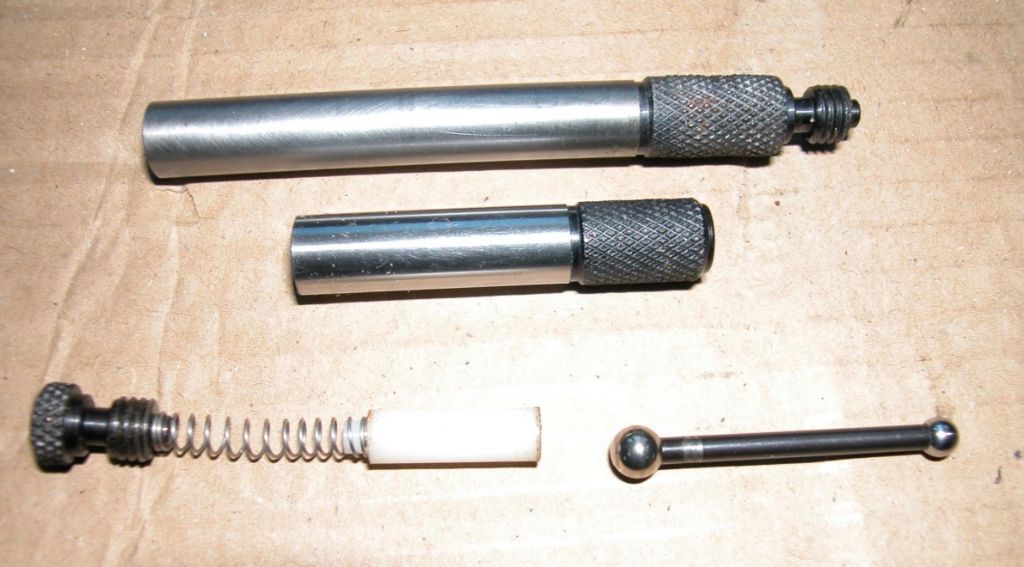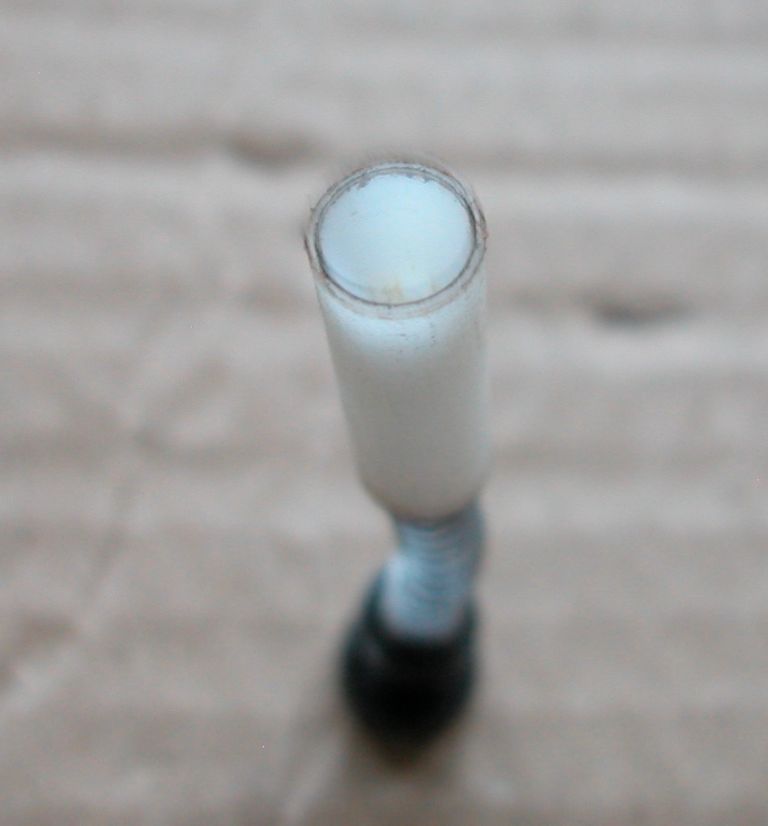Kiwi Bloke
I suspect that your stiff "General" brand edge finder was intended to be used with the light line method rather than the kick off method.
Huffam say :-
"Since the Huffam Centre Locator stem will not run off the surface of the work until it is forced beyond the centre line of the machine spindle, run off accuracy greater than .0005 in cannot be guaranteed. If greater accuracy is required, this can be obtained by the "light line" method. For convenience, the following example again refers to the horizontal datum face.
Lower the machine table, and allow the Centre Locator stem to run out of alignment again, then raise the table slowly, watching the flickering light line which appears between the spindle end and the datum face. As soon as this light disappears and the stem appears to be running on the surface of the work, stop the machine, and set the table dial to zero as for the run-off method.
When used in this way the stem will not run along the surface of the work and a accuracy to within 0.0002 in can be obtained. Special lighting is not required, but a magnifying glass increases the accuracy obtainable"
Although the light line method does work its a pretty frustrating procedure getting everything just so. Sounds even harder with a stiff collet. Earlier Huffams have a barrel shaped probe for straight edges which can be used in this way but the later ones have balls which aren't really suitable. With later ones its better to use the cylinder probe intended for picking up on round rods and other curved surfaces. The Huffam cylinder probe is 10 mm or 3/8 long, depending on whether its metric or imperial, and same diameter as the ball probe.
It doesn't seem unreasonably difficult to make a Huffam style body to take the ball ended probe out of a collet set. Innards of my metric (5 mm ball) Huffam in this picture :-

and a blurry close up of the pressure pad :-

I imagine there is some engineering subtlety involved in getting best performance but I had a shop made copy through my hands which was well up to 1 thou location performance but not quite as good as the real thing. Made to a respectable standard but nothing beyond any reasonably careful model engineer.
The Huffam ball seat is made in one with the body. For a home shop made one it would be easier to make the seat on a separate short barrel. Hold it in the body with loctite. Doesn't need to be very thick but easier to handle and push in dead square if you make it too long, maybe 1/2" or 12 mm and face the whole thing, tube and all, back to something more reasonable when the loctite has gone off. Countersink the outer end to give the probe room to swing.
The Geo. H Thomas version specifies a narrow conical seat for the ball cut with a sharp centre drill. Seems a sensible approach here. Pressure pad is nylon, same diameter as the upper ball with a smooth conical seat. Sharp centre drill again I think. Body tube bore is perhaps 20 – 30 thou, little under 1 mm, bigger than the upper ball and nylon pad so it all slides in very freely but doesn't rattle all over the shop. GHT specifies a couple of pounds spring force giving a couple of ounces deflection force. Probably not unreasonable but I'd guess Mr Huffam specified something bit lighter. Spring out of a retracting type, Parker refill compatible, ballpoint pen might well do. I've never used my extensions but they seem good idea.
Personally I'd just pony up for the real thing. Which I did. Twice!
Mentioning GHT reminds me that his analysis of how the things operate is wrong. Nothing to do with tilt. Just a matter of generating enough force between probe and ball for it to drive sideways along the surface. Once its moved a fraction off axis centrifugal force takes over and it flies.
Clive
Edited By Clive Foster on 21/07/2019 12:52:12
Edited By Clive Foster on 21/07/2019 12:52:58
lfoggy.






